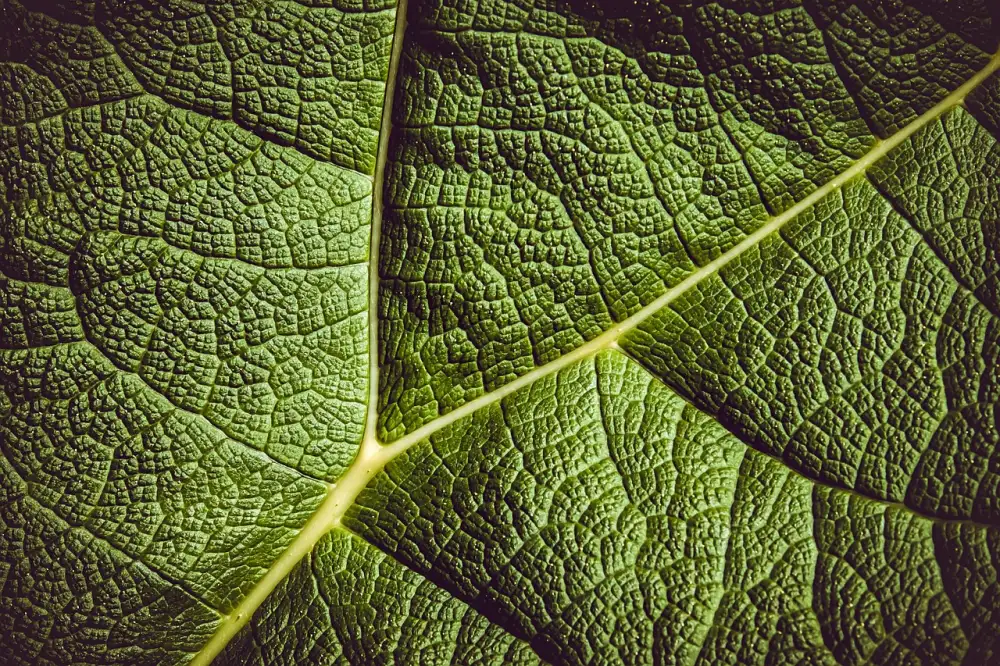Delightful Rhubarb Recipes: Unleashing the Tart and Sweet Flavors in Your Kitchen

- Health Benefits of Rhubarb: Nutritional Value and Potential Medicinal Properties
- Selecting and Storing Rhubarb: Tips for Choosing Fresh and Quality Produce
- Preparing Rhubarb: Cleaning, Trimming, and Removing the Leaves Safely
- Sweet Rhubarb Recipes: Indulge in Delectable Desserts and Baked Goods
- Savory Rhubarb Recipes: Explore Unique and Flavorful Main Courses and Side Dishes
- Refreshing Rhubarb Drinks: Quench Your Thirst with Tasty Beverages
- Rhubarb Preserves and Jams: Preserve the Season's Bounty for Year-Round Enjoyment
- Tips and Tricks for Cooking with Rhubarb: Enhance Flavors and Avoid Common Mistakes
Rhubarb, with its vibrant red stalks and unique tart flavor, is a versatile ingredient that can add a delightful twist to your culinary creations. Whether you're baking a pie, making a sauce, or creating a refreshing drink, rhubarb brings a burst of tanginess that perfectly balances sweet dishes. Its versatility allows it to be used in both sweet and savory recipes, making it an exciting ingredient to experiment with in the kitchen. So let's dive into the world of rhubarb and discover how this humble plant can elevate your cooking to new heights of deliciousness.
Health Benefits of Rhubarb: Nutritional Value and Potential Medicinal Properties
Rhubarb is not only a delicious ingredient, but it also offers numerous health benefits. This versatile plant is low in calories and packed with essential nutrients like vitamin C, potassium, and fiber. It is also a good source of antioxidants, which help fight inflammation and protect against chronic diseases. Rhubarb has been used in traditional medicine for its potential medicinal properties, including aiding digestion and promoting healthy skin. Incorporating rhubarb into your diet can be a tasty way to boost your overall health and well-being.
Selecting and Storing Rhubarb: Tips for Choosing Fresh and Quality Produce
When selecting rhubarb, look for stalks that are firm and crisp, with a vibrant color. Avoid any stalks that are wilted or have blemishes. The size of the stalks doesn't necessarily indicate quality, but thicker ones tend to be more tender. It's also important to choose rhubarb with fresh-looking leaves, as they can indicate the freshness of the stalks. Once you've brought your rhubarb home, store it in the refrigerator unwashed and loosely wrapped in a plastic bag. Rhubarb can stay fresh for up to a week when stored properly.
Preparing Rhubarb: Cleaning, Trimming, and Removing the Leaves Safely
Before diving into the delightful world of rhubarb recipes, it's essential to properly prepare this versatile ingredient. Start by giving the stalks a thorough rinse under cold water to remove any dirt or debris. Then, using a sharp knife, trim off both ends of the stalks.
Next, it's crucial to remove the leaves as they contain toxic levels of oxalic acid. While some sources suggest that small amounts are safe to consume, it's best to err on the side of caution and discard them entirely. Simply grasp the leaf at its base and gently pull it away from the stalk.
Once you've cleaned and trimmed your rhubarb, it's ready to be incorporated into your culinary creations. Whether you're making a sweet dessert or a savory dish, this step ensures that you're working with safe and delicious rhubarb. So go ahead and unleash the tart and sweet flavors in your kitchen!
Sweet Rhubarb Recipes: Indulge in Delectable Desserts and Baked Goods
Rhubarb's tartness pairs perfectly with sweet flavors, making it a delightful ingredient for desserts and baked goods. Try a classic rhubarb pie, where the tangy rhubarb is complemented by a buttery crust. For a twist on traditional recipes, experiment with rhubarb crumble bars or rhubarb crisp. These treats combine the tartness of rhubarb with a crunchy, sweet topping that will leave you craving more. Don't forget about rhubarb muffins or cakes, where the bright pink stalks add both color and flavor to your baked goods. Whether you're making a simple compote or an elaborate cake, incorporating rhubarb into your sweet creations will surely impress your loved ones.
Savory Rhubarb Recipes: Explore Unique and Flavorful Main Courses and Side Dishes
Rhubarb is not just for desserts! Its tart flavor can add a unique twist to savory dishes. Try incorporating rhubarb into your main courses and side dishes for a delightful surprise.
One popular option is to use rhubarb in chutneys or sauces. The tangy taste of rhubarb pairs well with meats like pork or chicken, adding a burst of flavor to your dish. You can also roast rhubarb alongside vegetables for a delicious side dish that complements the earthy flavors.
Another creative way to use rhubarb is in salads. Thinly sliced rhubarb adds a refreshing crunch and tartness to green salads, while cooked rhubarb can be used as a topping for grain-based salads like quinoa or couscous.
For those who enjoy experimenting with flavors, try making a rhubarb salsa. Combine diced rhubarb with ingredients like onions, jalapenos, cilantro, and lime juice for a zesty and vibrant salsa that goes well with grilled fish or tacos.
Don't be afraid to get adventurous in the kitchen and explore the savory side of rhubarb. Its unique flavor profile will surely impress your taste buds and elevate your culinary creations.
Refreshing Rhubarb Drinks: Quench Your Thirst with Tasty Beverages
When the temperatures rise and you're in need of a cool and refreshing drink, look no further than rhubarb. This versatile ingredient can add a unique twist to your favorite beverages. Whether you prefer a fizzy soda, a tangy lemonade, or a fruity cocktail, rhubarb can take your drink to the next level.
One popular option is rhubarb iced tea. Simply brew your favorite tea and let it cool. Then, add a splash of homemade rhubarb syrup for that extra burst of flavor. The tartness of the rhubarb perfectly balances the sweetness of the tea, creating a truly refreshing experience.
For those who enjoy a little fizz in their drinks, try making rhubarb soda. Start by simmering chopped rhubarb with sugar and water until it becomes soft and syrupy. Once cooled, strain the mixture and mix it with sparkling water or club soda. Add some ice cubes and garnish with fresh mint leaves for an elegant touch.
If you're feeling adventurous, why not try a rhubarb cocktail? Muddle some fresh strawberries with rhubarb syrup and lime juice in a shaker. Add your favorite spirit - vodka or gin work particularly well - along with ice cubes. Shake vigorously and strain into a glass filled with crushed ice. Top it off with some soda water for that effervescent finish.
Rhubarb's vibrant color and tangy flavor make it an ideal ingredient for refreshing summer drinks. So go ahead, get creative in your kitchen and quench your thirst with these delightful rhubarb beverages!
Rhubarb Preserves and Jams: Preserve the Season's Bounty for Year-Round Enjoyment
As the rhubarb season comes to a close, it's time to think about preserving this delightful ingredient to enjoy its tangy goodness all year long. Rhubarb preserves and jams are not only a delicious addition to your pantry, but they also make wonderful gifts for friends and family.
Preserving rhubarb is a simple process that allows you to capture its vibrant flavors and extend its shelf life. Start by washing and trimming the rhubarb stalks, removing any tough or fibrous parts. Cut the stalks into small pieces and place them in a large pot with some sugar and lemon juice.
Cook the mixture over medium heat until the rhubarb breaks down and becomes soft. You can add other fruits like strawberries or raspberries to enhance the flavor if desired. Once cooked, transfer the mixture into sterilized jars and seal them tightly.
The beauty of rhubarb preserves is their versatility. Spread them on toast or scones for a delightful breakfast treat. Use them as a filling for pies, tarts, or crumbles for a burst of tangy sweetness. They also make a fantastic accompaniment to cheese boards or charcuterie platters.
When making rhubarb jam, you can experiment with different spices like cinnamon or ginger to add depth of flavor. For an extra touch of luxury, try infusing the jam with vanilla beans or rose petals.
By preserving rhubarb now, you'll have jars of sunshine ready to brighten up your winter mornings and remind you of the joys of spring. So don't let this season's bounty go to waste - grab some fresh rhubarb and start preserving today!
Tips and Tricks for Cooking with Rhubarb: Enhance Flavors and Avoid Common Mistakes
When cooking with rhubarb, there are a few tips and tricks to keep in mind to enhance its flavors and avoid common mistakes. Firstly, it's important to balance the tartness of rhubarb with sweetness. Pairing it with sweet fruits like strawberries or adding sugar can help mellow out its tangy taste. Secondly, be cautious when adding liquids to rhubarb dishes as it releases a lot of moisture during cooking. Adjust the amount of liquid accordingly to prevent your dish from becoming too watery. Lastly, remember that rhubarb stalks cook faster than their leaves, so always remove the leaves before using them in recipes. By following these tips, you can fully enjoy the delightful flavors of rhubarb in your culinary creations.
In conclusion, rhubarb is a truly remarkable ingredient that adds a unique tangy and sweet flavor to any dish. Its versatility allows it to be used in a wide range of recipes, from desserts and baked goods to main courses and beverages. Not only does rhubarb offer a delightful taste experience, but it also boasts numerous health benefits and potential medicinal properties. So why not embrace the tangy and sweet delights of rhubarb in your culinary adventures? Explore the endless possibilities this versatile ingredient has to offer and let your creativity soar in the kitchen. Happy cooking!
Published: 24. 11. 2023
Category: Food



